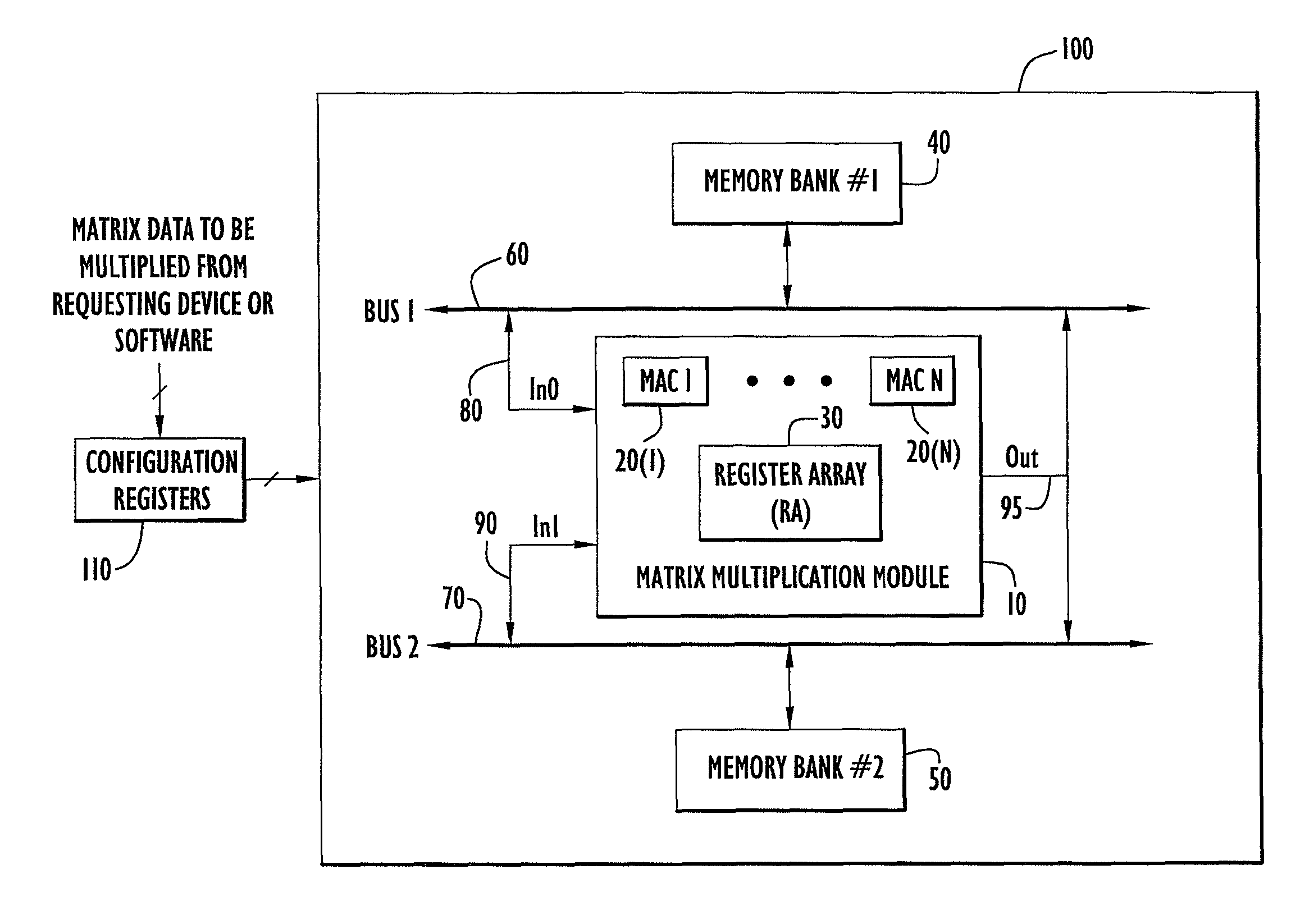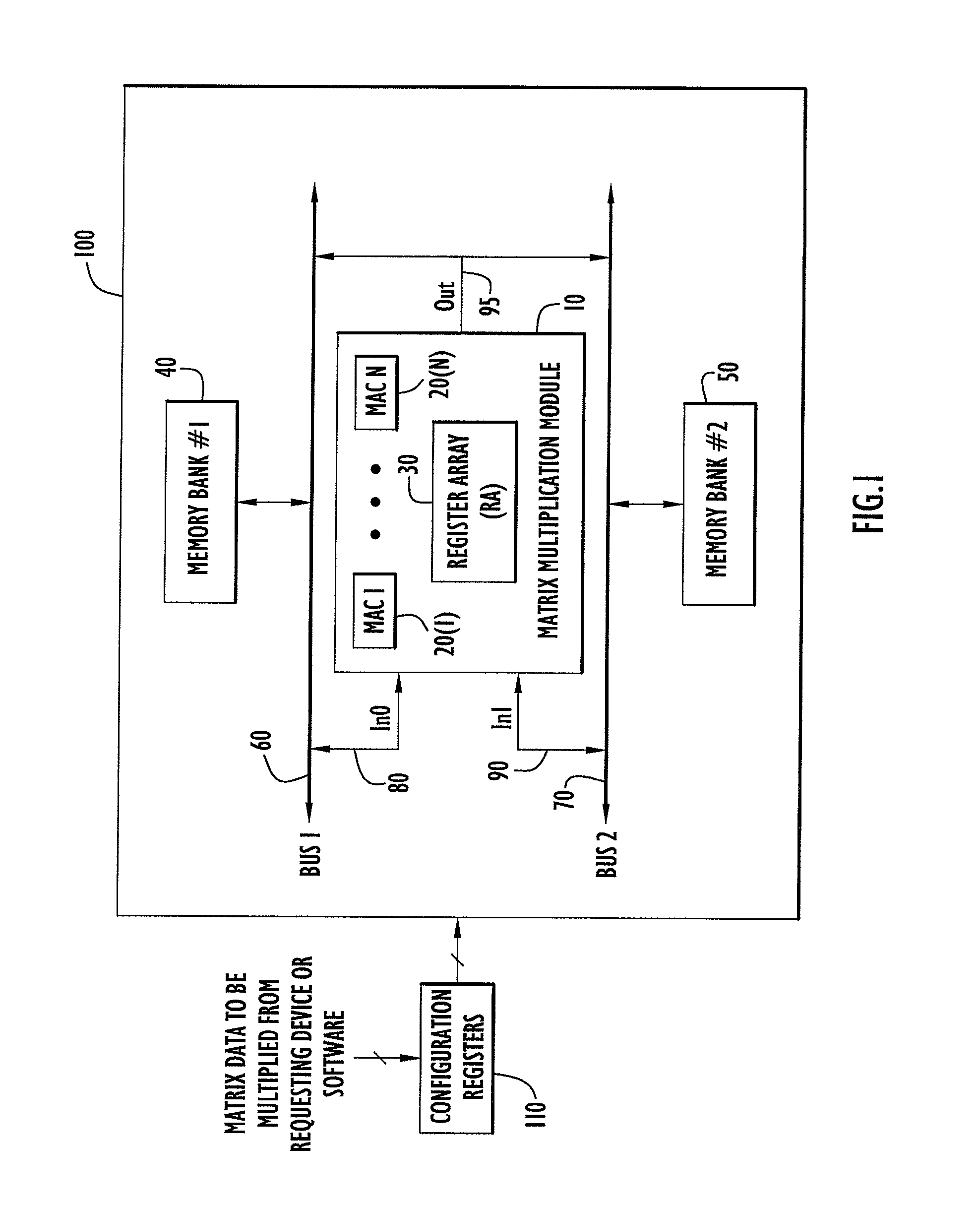High speed and efficient matrix multiplication hardware module
a hardware module and matrix multiplication technology, applied in the field of matrix multiplication hardware modules or cores, can solve the problem that matrix multiplication requires significant computation resources
- Summary
- Abstract
- Description
- Claims
- Application Information
AI Technical Summary
Benefits of technology
Problems solved by technology
Method used
Image
Examples
Embodiment Construction
[0025]According to the present invention, a matrix multiplication hardware module (also called a “core”) is provided that uses a variable number of multiplier-accumulator (MAC) units based on the number of data elements available for processing. The number of MAC units used during a multiplication of two matrices varies over time depending on the stage of the computation of the matrices. In one embodiment, the number of MAC units increases over time during a computation of two matrices.
[0026]The total (maximum) number of used MAC units is based on the size of the matrices to be multiplied. For specific sizes of the matrices, the number of used MAC units increases according to the availability of data during a computation session of two matrices. For example, when reading the first element from each matrix, only one MAC unit is needed to perform the multiply / add operation. The more data that is read as the computation progresses through the matrices, the more MAC units are used to pe...
PUM
 Login to View More
Login to View More Abstract
Description
Claims
Application Information
 Login to View More
Login to View More - R&D
- Intellectual Property
- Life Sciences
- Materials
- Tech Scout
- Unparalleled Data Quality
- Higher Quality Content
- 60% Fewer Hallucinations
Browse by: Latest US Patents, China's latest patents, Technical Efficacy Thesaurus, Application Domain, Technology Topic, Popular Technical Reports.
© 2025 PatSnap. All rights reserved.Legal|Privacy policy|Modern Slavery Act Transparency Statement|Sitemap|About US| Contact US: help@patsnap.com



